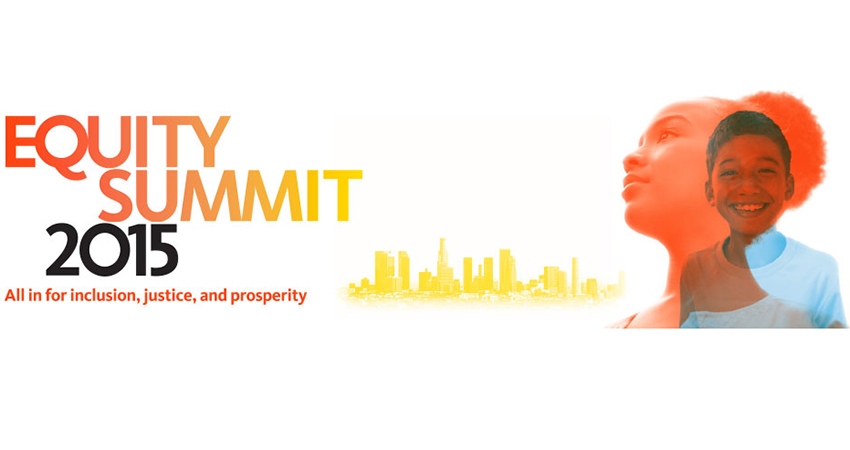Making the Case for Health Equity
Leer en español
PolicyLink’s Equity Summit 2015 – www.policylink.org
By Aditi Ramaswami
I spent the last week of October in California for PolicyLink’s Equity Summit 2015. Thousands gathered in Los Angeles, creating an incredible opportunity for fresh perspectives and innovative ideas toward making equity a nationwide reality. The agenda included talks ranging from climate work to arts and culture to criminal justice reform.
Every attendee was well aware of the attractiveness of health equity as a concept, but I, and likely others, wanted answers to the looming challenge of making it an issue everyone values and cares about. Over the course of three days, I came away with a lot of great information, and three big ideas that can set the foundation for making the broad case for health equity in Colorado.
- Disaggregated data: PolicyLink’s President and CEO Angela Glover Blackwell spoke about “all-in cities,” defined as thriving communities that offer economic resilience, environmental sustainability, a culture of health and meaningful community engagement. In order to create this equal opportunity, these cities must have access to data that is drilled-down enough to highlight geographic and demographic pockets of need in communities, so they know where to invest resources.
- Engagement at all levels: For these investments to be successful, everyone needs to feel like they have a stake in the outcome, and that they benefit from a return on that investment. This means engagement at all levels and across the public and private sectors, including businesses, faith groups, youth groups, grassroots organizations, advocates, policymakers, police officers, health care professionals, educators and others. Cross-sector partnerships in a collective-impact model could build the trust and buy-in needed to invest in resources and the social determinants of health.
- Strategic messaging: Having the right data, and the ability to meaningfully engage with those who have and should have a stake in equity, can support the development of a comprehensive messaging strategy that connects targeted investments in areas of great need to widespread public benefit. Investing in projects that benefit communities with the deepest needs can catalyze economic growth. It is time to capitalize on that message. Equity is not only a “social justice” issue, and framing it as such stunts it as a movement.
I left the Summit with a renewed passion for the Colorado Coalition for the Medically Underserved’s long-term ambition of achieving health equity. These three approaches can be the foundation for social impact investments, with the goal of maximizing social, environmental, and financial impacts—the “triple bottom line.” This can set the stage for investing in communities in new ways and moving us closer to our goals. I’m ready to claim the torch! Who’s with me?
A version of this blog post first appeared on the website of the Colorado Coalition for the Medically Underserved. The organization, which works to create equity in the health care system, is a grantee of The Colorado Trust.

